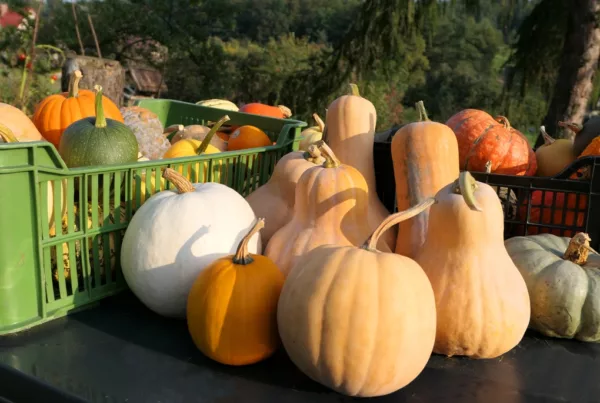Written by Chris McLaughlin
Long seen as the darlings of the garden, all the world loves a butterfly or a bee. But other insects? They’re described as a problem, a nuisance, or just downright creepy. It may surprise you to learn that most insects are not pests at all, but an indispensable – and often heroic – part of our SFG’s ecosystem.
Of course, some bugs are out to devour your veggies and disfigure your blooms. But many insects in your SFG are beneficials. One essential group are essential pollinators like honeybees, native bees, butterflies, and moths.
Another type of visitors are predatory insects – the calvary that comes to your garden’s rescue. Predators are blood-thirsty critters that relish the bugs that are eating your plants. Luring them to your garden is as easy as allowing the bad guys to show up – and simply refraining from using synthetic pesticides in your Square Foot Garden.
So, who are these unsung insect heroes of the garden? We’ve shared a few photos but a quick online search will turn up hundreds of images so you can identify these friends.
Assassin bugs – While lacking in looks, love them for what they can do for your garden. Assassin bugs make short work of aphids, earwigs, cutworms, tomato hornworms, cabbage worms, tobacco budworms, Mexican bean beetles, Colorado potato beetles, Japanese beetles and leaf hoppers.
Damsel Bugs –These adults – and nymphs – consume pests like spider aphids, mites, whiteflies, sawfly larvae, corn earworm, cabbage worms tobacco budworms, asparagus beetles, Colorado potato beetle larvae, moth eggs, and the eggs of other pests. Like assassin bugs, damsels stick their beaks into their dinner, sucking the juices out of them.
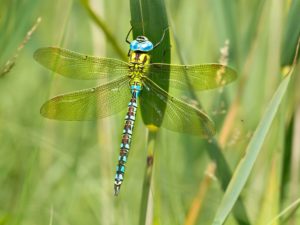
Dragonflies are superior hunters.
Dragonflies and Damselflies – As insects go, dragonflies and damselflies are just as attractive as butterflies. They come in various colors and are often iridescent. Their young enjoy chowing down on mosquito larvae found in ponds, while adults are dogged predators that grab their prey out of mid-air.
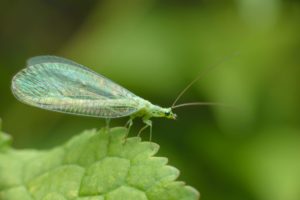
Lacewings are both predators and pollinators.
Lacewings – With her light green, slender body and lacy gossamer wings, this lovely lady is a voracious predator. Adults and their larvae (AKA: antlions) can consume up to 100 aphids a day. They also gobble up other soft-bodied insects like spider mites, thrips, mites, mealy bugs, scale, whiteflies, Colorado potato beetle larvae and asparagus beetle larvae. Adults are known to do a little pollination, as well.
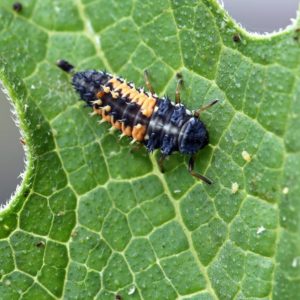
Ladybug larvae look a little creepy. But trust me, this is a good guy!
Ladybugs – Aside from being adorable, ladybugs, AKA lady beetles or ladybirds, are not just another pretty face. They are also famous for being one of the most effective predators of aphids. The larvae look like some orange and black alligator creature, but you should learn to identify them as they can consume around 300 aphids a day. Once an adult, their appetite reduces to about 50 aphids a day but they also cannot resist mites, spider mites, asparagus beetle larvae, bean beetle larvae, cinch bugs, bean thrips, and Colorado potato beetle larvae.
Spiders – I feel you cringing from here. But spiders are excellent predators and help keep garden pest numbers manageable. In fact, spiders are some of the most important biological pest controls hands down. Some are ambush hunters like trap door and wolf spiders; others like bright yellow garden spiders catch their prey with sticky webs.
Trichogramma Wasps – These predators are sneaky. At 1/100th of an inch, they are microscopic parasites that kill by piercing caterpillar eggs and laying their own eggs inside. This prevents the caterpillars from hatching at all. Trichogramma wasps wreak havoc on codling moth caterpillars, borers, cutworms, corn earworms, cabbage looper, tent caterpillars, cane borers, armyworm, and others.
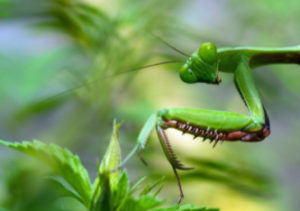
Praying Mantids
Praying Mantids – Also called a mantis, these garden friends are both captivating and strange. They can swivel their heads 180 degrees and watch the world through large, compound eyes. Young mantids eat aphids, leafhoppers, caterpillars, mosquitoes, and other soft-bodied insects, beneficials included. Adults move on to a larger meal and ambush beetles, grasshoppers, crickets, and the like.
One final tip: location counts! To help you keep an eye on the insect foes – and friends – in your garden, Mel Bartholomew, inventor of the Square Foot Gardening method, always recommended keeping your beds near your home for convenient access. This “keep your veggies close” rule, along with hand watering, encourages daily inspection of your beds.



